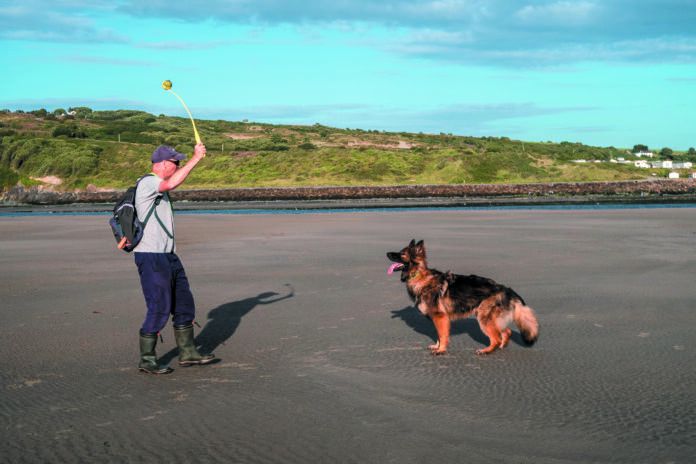When the Center for Pet Safety started receiving more and more reports of dogs dying because of toy balls lodging in their throats during play, the organization decided to investigate. It turned out that balls that are relatively heavy for their size (heavier than a tennis ball) and also have a particularly smooth surface are the ones getting stuck at the back of dogs’ throats, with people unable to dislodge them. If a ball is thrown with a launcher — one of those gadgets with a handle that cups the ball at one end and allows it to go faster and farther, the risk becomes that much greater. Velocity of the ball adds to the threat.
A number of people with dogs watched their pets die in front of them. The ball completely blocked the animal’s airway, and the dog succumbed within minutes. The lubrication of a dog’s saliva makes it that much harder to grip a ball and remove it from a dog’s mouth once it becomes stuck.
The balls tended to be 2.5 inches in diameter, although some were as big as 3.5 inches, and impeded the breathing of large-size dogs such as retrievers and Labs. But the founder of the Center for Pet Safety, Lindsey Wolko, says that small- and medium-size dogs could also get balls stuck in their throats if the balls are smaller but also smooth-textured and equally heavy for their size, particularly if they are thrown with a launcher. “We believe the reports we’ve received are the tip of the iceberg,” she says.
The website of the center (CenterforPetSafety.org), a non-profit research, advocacy, and educational organization dedicated to consumer and companion animal safety, notes that product labels on toy balls for dogs generally focus on a dog’s ability to damage a ball or ingest a couple of pieces of it. Only a couple of brands the center examined actually mentioned a choking hazard.
The organization suggests that people think carefully about throwing balls to their dogs that are smooth and heavy for their size. It also advises that ball launchers be used to launch away from the dog rather than toward the animal. That is, the dog should chase the ball rather than catch it. Catching the ball directly from the launcher is what has been indicated as a primary risk in the reports received.





